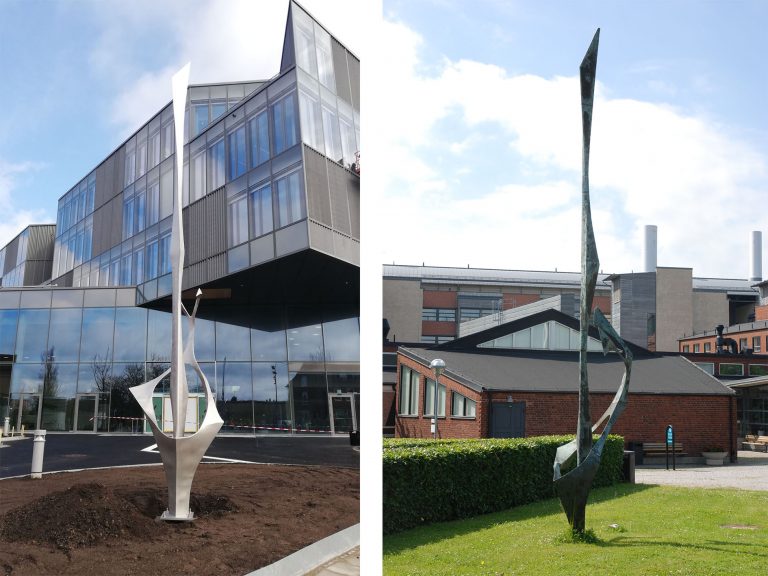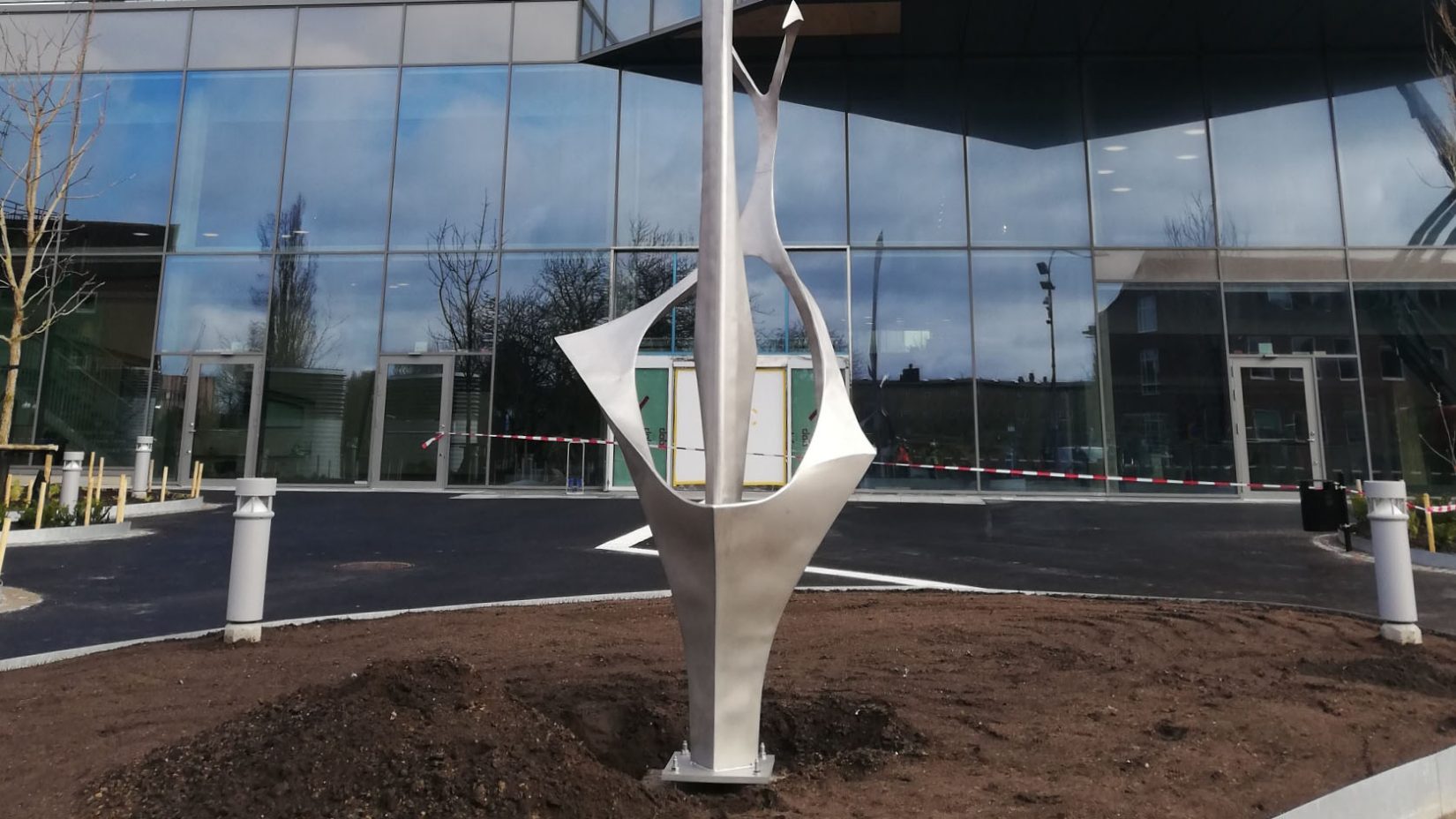After being run-down by the weather, hit by a truck and partially destroyed by a copper thief, the Arne Jones Sculpture Vertical Composition was badly damaged in a storm in 2011. A new version of the culturally important sculpture has now been recreated and erected at Lund University – a commission that required tact and collaboration between many different skills.

Arne Jones was one of the most important Swedish sculptors during the 1950s, 60s and 70s. Vertical Composition was carried out in close collaboration with Klas Anshelm, the architect who designed the Department of Physiology – the building the sculpture interacted with. The sculpture was a respons to a program statement that called for “confidence and an unyielding sense of freedom” and was created when memories of the Second World War were fresh and alive. A driving force behind the artwork was Georg Kahlson, professor of physiology and one of the few openly anti-Nazi professors in Lund. The sculpture has been popular in Lund and since it was damaged in 2011 there has been an opinion to repair the work. Thanks to a collaboration between Akademiska Hus, Lund University and the Public Art Agency Sweden this became possible.
Inspiration for work with late cultural heritage
Working on the restoration has not been easy. The remains that survived the storm have been difficult to read information from. Instead, historical sources and archives have been important, not least material that is currently at the Skissernas Museum. Arne Jones’ daughter Ditte Jones has been central to the project and has assisted with information about how the artist worked. Many different professional categories have since been involved in developing the new Vertical Composition.
Björn Norberg is curator in charge of the project at the Public Art Agency. He describes the work with the sculpture as putting together an advanced puzzle.
The original sculpture was made of copper – a material that has become attractive to thieves in recent years. Therefore, there was a desire to create the new work in a material that is less likely to be stolen. After comparing Arne Jones’ sketch, discussing with Ditte Jones and comparing historical sources, a decision was made to use one of the materials that Jones presented in his sketch. In addition to copper, these were iron, stainless steel and aluminum. Ditte Jones did not like the idea of aluminum, which with time has a less appealing patina. She said one of the most important craft insights of the artwork was how Arne Jones did the sculpting – he did this himself, mostly using folded copper sheet on top of a steel structure. This gave the sculpture a living surface that she wanted to keep, says Björn Norberg.
Many professional categories involved in the re-creation
“The images that exist and the actual parts we were able to examine have formed the basis of a method for how we were able to recreate the sculpture. We also scanned a model of the sculpture that is in the Skissernas Museum (well aware that it does not correspond 100% to the final version of the sculpture). This was then the basis for a 1:1 model in plaster. Marc Rizell and Viggo Wichmann who have done the sheet metal work in the sculpture, have been able to work by this and have tried to transfer all the original sheet metal working methods. Before that, we have also had building designers calculate and draw a load-bearing structure that can make the work of art sustainable for the future. Some of the difficulties that have arisen during the project have been finding craftsmen who have mastered the craft itself. The project as such is unique and can serve as a role model.
“I have never been involved in recreating a work of this importance or size before. It is a rare thing to produce something like this.”
“I have never been involved in recreating a work of this importance or size before. It is a rare thing to produce something like this. The artwork’s connection to the aftermath of the Second World War, personal involvement, its unique position in Sweden’s art history, and the joy of the Jones family and the Jones society at the result, make this project one of the most important I have worked on over a period of 30 years”, says Björn Norberg.
New location selected
Originally, Vertical Composition stood on a site that was well chosen in close collaboration with the architect and the artist. Now, with the Forum Medicum being built, the conditions for Vertical Composition have changed and the original placement no longer works. Just as Jones collaborated with Klas Anshelm, the Public Art Council has collaborated closely with Lund University and Akademiska Hus. The restoration of the work has required a keen sense of historical and artistic values. What Jones, Anshelm and Kahlson wanted to express through the work, and the imprint they left on art history, now continues.
